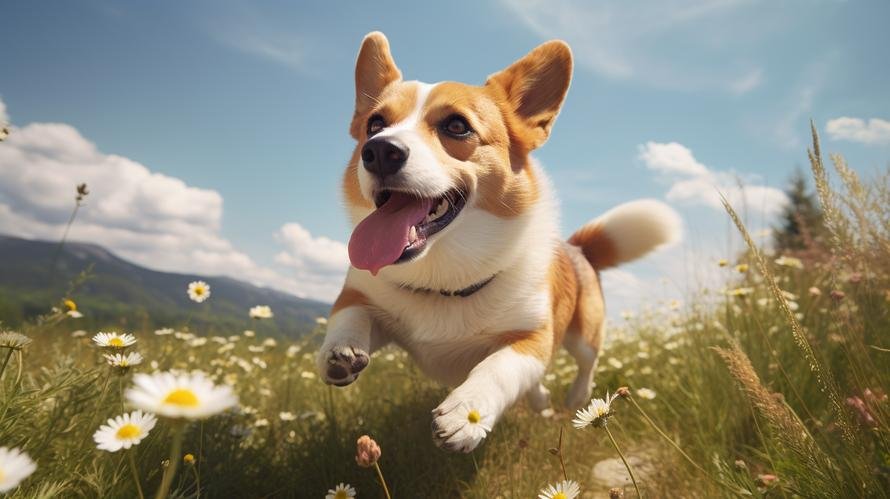Imagine this: your precious Beagle, with its adorable floppy ears and expressive eyes, suddenly transforms into a fierce and protective guard dog, barking aggressively at strangers who venture near your property, and intuitively sensing any potential danger looming around your home. Sounds a bit far-fetched, doesn’t it?
Well, it’s right: Beagles are not traditionally considered guard dogs. Their sweet, amiable nature and voracious appetite for fun and play make them excellent family pets – they often get along perfectly well with adults, children, and even other dogs. However, that doesn’t mean your Beagle can’t step up to the plate if the situation calls for some protective action.
Let’s dive a little deeper into the world of Beagles, and discover whether these cute, cuddly fellows can double as guard dogs.
The term “guard dog” invokes images of large, intimidating breeds like German Shepherds, Rottweilers, or Dobermans – dogs that are naturally protective, have a powerful bark, and don’t hesitate to show their teeth if they feel their household is threatened.
But here’s the inherent question: does a guard dog necessarily have to be big, bulky, and intimidating?
The answer may surprise you: not at all.
Guard dogs have one crucial job: to deter strangers and potential intruders, and in the ideal scenario – to alert their owners about the approaching danger. Believe it or not, different dog breeds have different ways of accomplishing this goal.
Despite the perception, being a guard dog isn’t just about muscle and might; it’s primarily about instinct, alertness, and a protective nature. A Beagle might not be able to physically ward off an intruder, but it can certainly bark their hearts out and alert you about the presence of someone unfamiliar.
Of course, there’s more to making a useful guard dog than just barking at strangers. Let’s examine the Beagle’s qualities in closer detail and see how they fare in terms of guarding potential.
Beagles are scent hounds, bred for hundreds of years to lead the hunt and track game. Their powerful nose – second only to that of the Bloodhound – can pick up a scent from miles away. The Beagle will not hesitate to howl or bay when they sense something amiss, be it reaching a quarry during a hunt or sensing an unknown figure near their home. It’s this trait that just might make your Beagle a decent ‘alert dog.’
Remember, there’s a difference between a guard dog and an alert dog: A guard dog will both alert you of an intruder and confront them; an alert dog will let you know about the intruder but may not have the size or the temperament to physically challenge them. Beagles, with their smaller size and friendly disposition, fall in the category of the alert dogs.
Their friendly nature can theoretically become a disadvantage. Beagles love people and often assume that everyone they meet is a new friend. They’re not naturally suspicious or wary of strangers, like some breeds are. Combine that with a relatively small size – an average adult Beagle only weighs about 25 to 30 pounds – and it’s clear that Beagles are not particularly intimidating.
But, it’s also their innate friendliness that can be their best asset. Beagles are highly adaptable and intuitive. They are quick learners with a strong ability to pick up on patterns and routines. If a Beagle is properly trained to discern friendly visitors from potential intruders, they may surprise you with how well they can perform the ‘alerting’ part of the guard dog role.
Moreover, a Beagle’s bark (or bay, more accurately) is loud and distinctive – ideal for alerting their owners about an approaching stranger. And while Beagles generally lack the aggressive instincts to attack, they can potentially be trained to use their bark effectively as a deterrent.
Additionally, it’s worth noting that Beagles are pack dogs. This means they have a strong loyalty towards their pack – in your case, their family. So, despite being friendly with strangers, they possess an inherent inclination to protect their pack or family when they sense any danger.
In conclusion, is a Beagle your quintessential guard dog? No. But, they do have attributes that allow them to function as alert dogs. Remember, much of a dog’s ability to guard hinges heavily on the dog’s individual temperament and the training it receives. If you have a Beagle and are contemplating training it to be a more effective guard dog, remember to focus on its strengths. Leverage its powerful sense of smell, astonishing capacity to pick up on routines, and a persistently loud bark for maximum advantage.
The key to making your Beagle a successful guard dog rests in teaching them to channel their instincts, become more conscious of their surroundings, and use their bark to alert and potentially deter an unwelcome visitor. Rest assured, you don’t need a dog that’s all brawn, size, and aggression to keep your home safe. Sometimes, the best kind of security comes on four little legs with a wagging tail and a wet nose!



